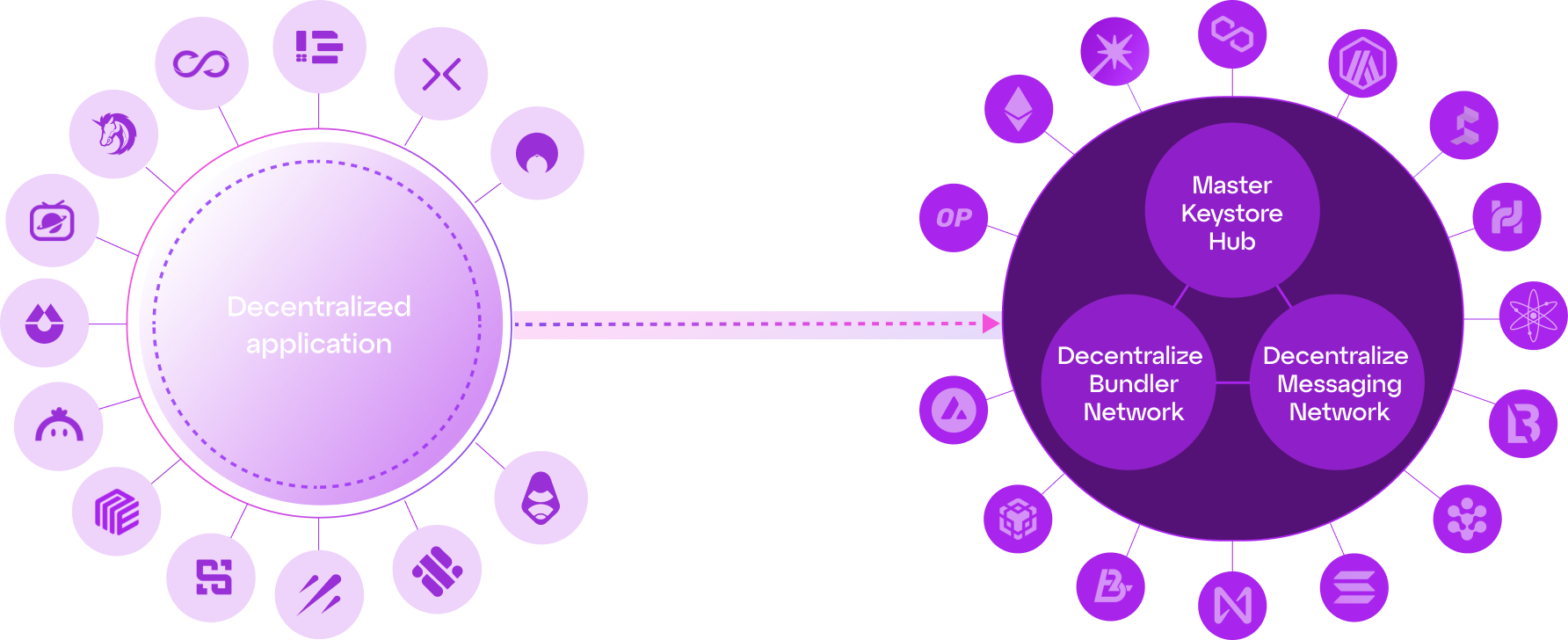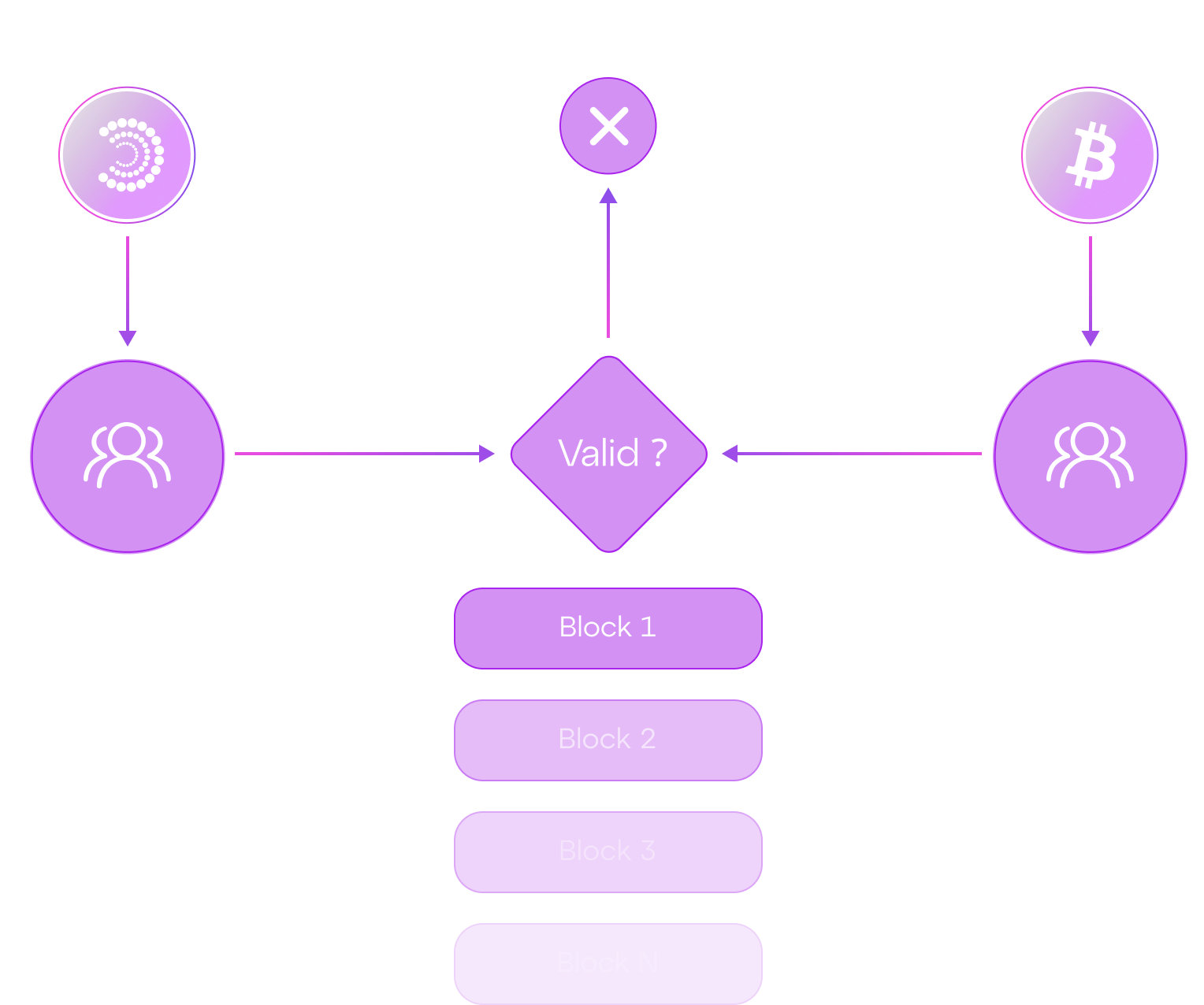Particle Network’s main product is Universal Accounts (UAs). Through UAs, any Web3 user can have a single account, balance, and interaction point to be used across all chains. This achieves ✨the experience of chain abstraction✨.
However, Web3-wide chain abstraction isn’t possible without uniform, secure, and trustless coordination.
Since most blockchains are fundamentally incompatible, especially across ecosystems (BTC, EVM, non-EVM, etc.), chain abstraction is nearly impossible to build into blockchains themselves.
This underscores that there are multiple technologies that need to be stacked to achieve chain abstraction as an experience. Several factors need to be coordinated, leading to the following questions:
To create the near-perfect coordination that Universal Accounts require, a specialized mechanism that coordinates all the necessary factors is needed.
So, we resolved to create one.
The Particle Network L1 powers Universal Accounts through a decentralized network of nodes and modules. With its multiple mechanisms, it is responsible for facilitating transaction execution, settling results, and maintaining Universal Accounts' state.
As opposed to smart contract blockchains like Solana, Ethereum, or its L2s, the Particle Network L1 is not a chain for developers to build applications on, or for users to transact. Rather, it serves an infrastructural role, unifying the users and liquidity of all other chains.

The Particle Network L1 retains its integrity and sequencing through a robust validation mechanism.
All transactions executed by Universal Accounts are ultimately settled on the L1 and verified by its validator set. This validator set leverages dual economic security, relying on $PARTI (Particle Network’s native token) and $BTC staking (through Babylon).
As such, Particle Network’s validation mechanism is composed of two groups: one secured by $PARTI and one secured by $BTC. Both groups must agree on validity for a block to be verified. This means that transaction sequences executed by Universal Accounts are verified by a diverse set of validators, rather than beholden to one or a handful of entities with collusion potential.





